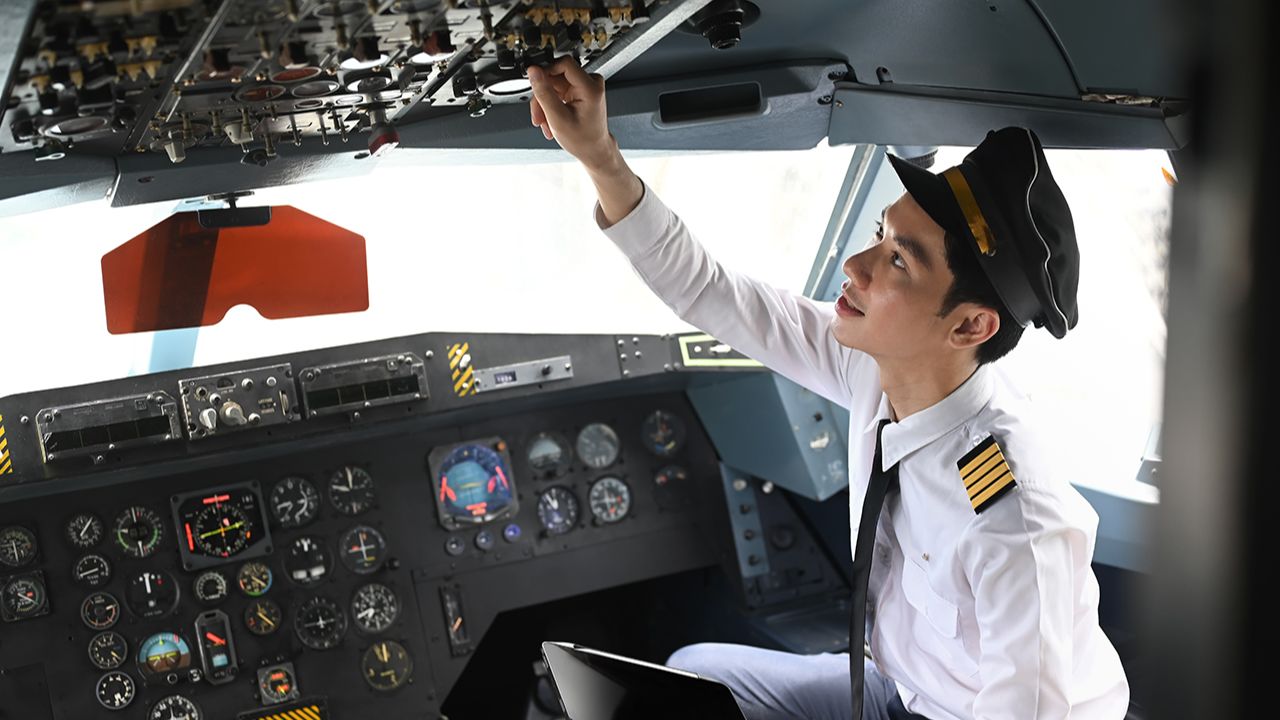Instrument Rating Cost: A Complete Guide for Pilots
Dec 25, 2023
Ready to spread your wings and navigate the exciting world of flying? Aspiring to become a pilot is a thrilling journey indeed, but it is equally important to understand the costs involved, especially when it comes to obtaining an instrument rating to your pilot license.
Let’s embark on this adventure together and explore the financial landscape of becoming a professional pilot, focusing on the instrument rating cost!
Key Takeaways
-
Invest in an instrument rating to open up a world of possibilities and reach your destination safely.
-
Take advantage of cost saving methods, choose the right flight school for you, and explore financing options to fund your training.
-
Obtain additional certifications & ratings for increased safety & job opportunities!
Understanding Instrument Rating Costs

Obtaining an instrument rating is a significant stepping stone in any pilot’s career. It can even reduce your commercial pilot license cost. However, this comes with its share of expenses. From ground and flight instruction to acquiring a private pilot license, the costs can add up. Generally, the private pilot license cost ranges from $8,300-$12,300. This investment will unlock a world of exciting possibilities, including:
-
Flight training
-
Ground school
-
FAA written exam
-
FAA Medical Certificate
-
Private Pilot Checkride
-
Cross-country flight time
The financial commitments involved in achieving an instrument rating encompass several different expenses, such as:
-
The cost of aircraft rental for the required flight hours, which is often the most substantial expense.
-
The cost of a medical certificate, typically ranging between $75 and $250.
-
The cost of the FAA written exam for an instrument rating, which is around $160.
-
The checkride for your instrument rating, which can range between $400 and $600.
These expenses are an investment in your pilot license and future aviation career, and they will provide a significant return once you commence your instrument flight training.
Flight Training Expenses
When calculating your flight training expenses, you need to consider aircraft rental rates and flight instructor fees. Assuming a rental rate of $100/hr and a flight instructor fee of $60/hr, these costs can add up to thousands of dollars. If you’re starting out, investing in your Sport Pilot certificate could cost around $8,000. For instrument rating training, you could spend between $8,000 and $12,000 on aircraft rental alone.
Flight instructors usually charge between $50 and $80 per hour for instrument rating training. This includes both in-flight and ground instruction before and after the flight. You should be aware that under Part 141, up to 40 percent of the total flight training hour requirements can be logged in an Aviation Training Device (ATD). Similarly, under Part 61, up to ten hours can be logged in a Basic Aviation Training Device (BATD).
Ground Instruction Costs
When it comes to ground instruction, the costs cover textbooks, charts, and other essential supplies. Online ground school training for instrument rating is typically between $300 and $600, offering an affordable way to get the training you need. In-person classroom training, on the other hand, could cost around $2,500.
For your instrument rating ground instruction, you’ll need textbooks like the ASA Pilot’s Manual - Instrument Flying PM 3. You’ll also need IFR en route charts and sectional charts, which usually range from $10 to $20 each.
Benefits of Obtaining an Instrument Rating

Having covered the costs, the conversation now turns to the benefits of obtaining an instrument rating. Here are some of the benefits:
-
It makes you a safer, more capable, and confident pilot.
-
It opens up a range of career prospects.
-
You can fly under instrument flight rules (IFR), navigating through the clouds, and landing safely at your destination even in low visibility conditions.
That’s the power of an instrument rating!
If you want to make the most of your instrument rating costs, adding a multi engine rating turns your instrument rating into a multi engine instrument rating. With this added rating you'll be able to fly bigger, more versitile aircraft and even expand your aviation career!
Another notable advantage is the potential reduction of your insurance premium by up to $500 annually. That’s a great way to save money in the long run. You also have the flexibility of choosing between advanced digital instrumentation or traditional setups, both of which can meet your training needs and fit your budget.
Time Commitment for Instrument Rating
Time is another key factor to consider when pursuing an instrument rating. Pilots who train full-time typically complete the requirements in a span of 4 to 6 months. This is the average time taken by a pilot to fulfill the necessary criteria. Part-time training doesn’t always go by quickly. It could take up to a year or more for a trainee to meet the full requirements for the rating. But remember, each hour spent in the cockpit brings you one step closer to your dream of flying!
For those keen on a faster progression, accelerated programs provide a swifter route to securing an instrument rating. These programs typically involve longer training days and more flight hours per day, allowing you to progress at a faster rate. However, the duration can vary depending on the specific accelerated program you choose.
Required Flight Hours for Instrument Rating
The FAA requires a total of 40 flight hours under instrument conditions to qualify for an Instrument Rating. This ensures pilots have sufficient time to become confident and gain experience in aerial navigation. ‘Instrument conditions’ refer to situations where a pilot artificially limits their outside view and requires a safety pilot for added safety.
Completing the required cross-country flight hours for an instrument rating offers pilots the enriching experience of:
-
Navigating and operating an aircraft over vast distances
-
Soaring above the clouds
-
Mapping out your path
-
Managing various weather conditions
It’s a challenge, yes, but one that promises to make you a better, more confident airline pilot!
Exam Fees and Testing Requirements
In addition to flight and ground instruction costs, future pilots should also consider exam fees and testing requirements. The FAA written test for an instrument rating comes with a price tag of $160.
The checkride for an instrument rating, which is essentially a practical test of your flying skills and knowledge, can range from $400 to $600. Although these costs may seem substantial, remember that they are a crucial part of your journey towards becoming a professional pilot. Each test passed is a milestone achieved in your aviation career!
Saving Money on Instrument Rating Training

Despite the cumulative costs of obtaining an instrument rating, there exist methods to economize on your training. For instance, practicing independently in a flight simulator, finding a club or school with affordable rates, or combining instrument and multi-engine training can make your instrument rating training more cost-effective.
Studying at home can help you save on instrument rating training in several ways:
-
It reduces the overall training hours required.
-
It eliminates the need for additional classroom instruction.
-
Flight simulator training tends to be more cost-effective, as it eliminates the need for fuel, aircraft maintenance, and other operational expenses.
-
The Redbird SD flight simulator is an excellent choice for cost-effective instrument rating training.
Choosing the Right Flight School for Your Instrument Rating
Selecting the appropriate flight school for your instrument rating is a pivotal step on the path to a professional piloting career. Consider factors such as:
-
the syllabus
-
simulator training
-
scenario-based flights
-
the quality of the instructors
Remember, the right flight school can provide you with comprehensive training, hands-on experience, and a structured learning environment. In fact, many flight schools offer a variety of programs tailored to meet the needs of aspiring pilots.
Although first-attempt pass rates on checkrides can give some indication of the quality of instruction, they do not reliably reflect the enduring quality of a course. It’s essential to select a flight school that prioritizes teaching you flight lessons, not just teaching the system. With the right school, you’ll be well on your way to soaring new heights in your aviation career!
Accelerated vs. Traditional Instrument Rating Programs
On the path to securing an instrument rating, two primary options exist: accelerated or traditional instrument rating programs. Accelerated programs are designed to provide intensive training over a shorter period of time, usually around 10 days. They have a high success rate for students and provide excellent value for money.
On the other hand, traditional instrument rating programs offer comprehensive training, hands-on experience, and a structured learning environment. However, they require an extended time investment and may have higher costs. It’s important to weigh the pros and cons of each option and choose the one that best suits your needs, goals, and circumstances.
Financing Options for Instrument Rating Training
Don’t allow the financial considerations of instrument rating training to deter you from your aspirations of flying! There are several financing options you can explore, such as:
-
Personal loans
-
Flight training scholarships
-
Unsecured personal loans
-
Secured personal loans
-
Student loans
-
Personal lines of credit
Flight training scholarships, such as:
-
AOPA Foundation Scholarship Program
-
Sheltair & Avfuel: Future Takes Flight Scholarship Program
-
Experimental Aircraft Association’s Flight Training Scholarships
offer another viable option. It’s always a good idea to research and explore all your options before making a decision. Remember, investing in your instrument rating training is investing in your future as a professional pilot!
Additional Certifications and Ratings
Once the skies are yours with your instrument rating, you may wish to contemplate several additional certifications and ratings after obtaining your private pilot certificate. These include:
-
Commercial Pilot Certificate
-
Certified Flight Instructor (CFI) Rating
-
Airline Transport Pilot (ATP) Certificate
-
Multi-Engine Rating
-
Seaplane Rating
-
Helicopter Rating
-
Glider Rating
Each of these certifications and ratings offers unique benefits and opportunities. For instance:
-
A Commercial Pilot License gives you the ability to transport passengers for a fee
-
A Multi-Engine Rating increases your safety, performance, and job opportunities
-
Acquiring a Certified Flight Instructor (CFI) certification can offer a dependable schedule and a good work-life balance, a feature that many other aviation career paths lack.
Summary
We’ve taken an in-depth look into the world of aviation, specifically focusing on the costs associated with obtaining an instrument rating. We’ve covered everything from flight training and ground instruction costs to the time commitment required, the benefits of obtaining an instrument rating, and various financing options.
In conclusion, becoming a professional pilot is an exciting journey filled with challenges and rewards. Obtaining an instrument rating is a significant milestone in this journey and a worthwhile investment in your future. So keep your eyes on the skies, dream big, and fly high!
Frequently Asked Questions
How long does it take to get an instrument rating?
It takes approximately 3 months for full-time students and up to 1 year for part-time students to get an instrument rating, requiring 10 hours in an airplane and 40 hours of actual or simulated IR flight time.
How much does CFI cost per hour?
CFI flight instructor services typically cost between $40and $75 per hour.
What are the costs associated with obtaining an instrument rating?
Obtaining an instrument rating comes with a considerable cost, ranging from the expenses of flight training and ground instruction to exam fees and testing requirements. The private pilot license and instrument rating together could add up to a total of $25,000.
What are the time commitments required for instrument rating training?
Obtaining an instrument rating is a significant commitment of time, typically 3-6 months for full-time training and up to a year or more for part-time study.
What are the benefits of obtaining an instrument rating?
An instrument rating enables pilots to become safer and more competent, increasing career prospects and potentially reducing their insurance premiums. It's a great way to take flight training to the next level!
